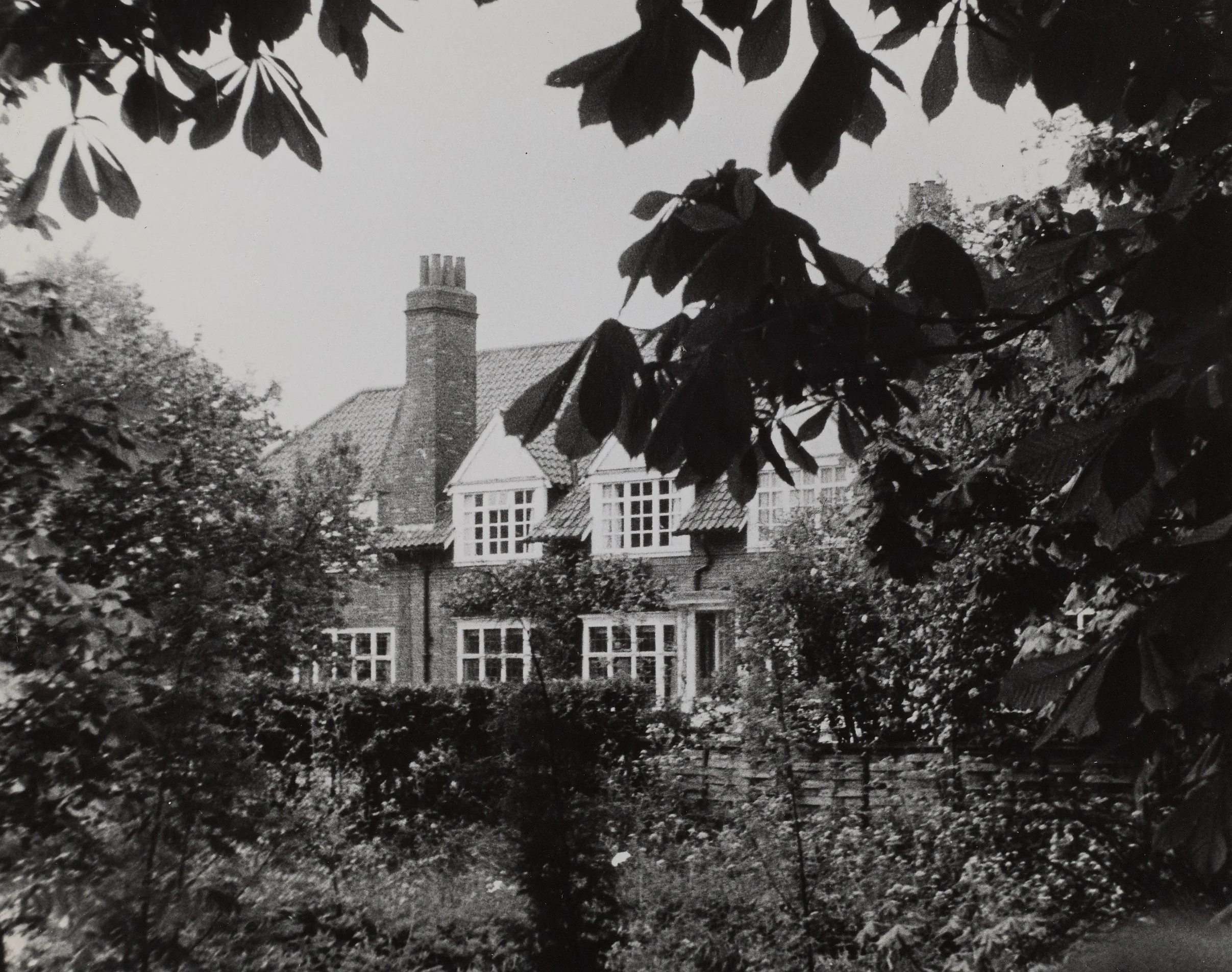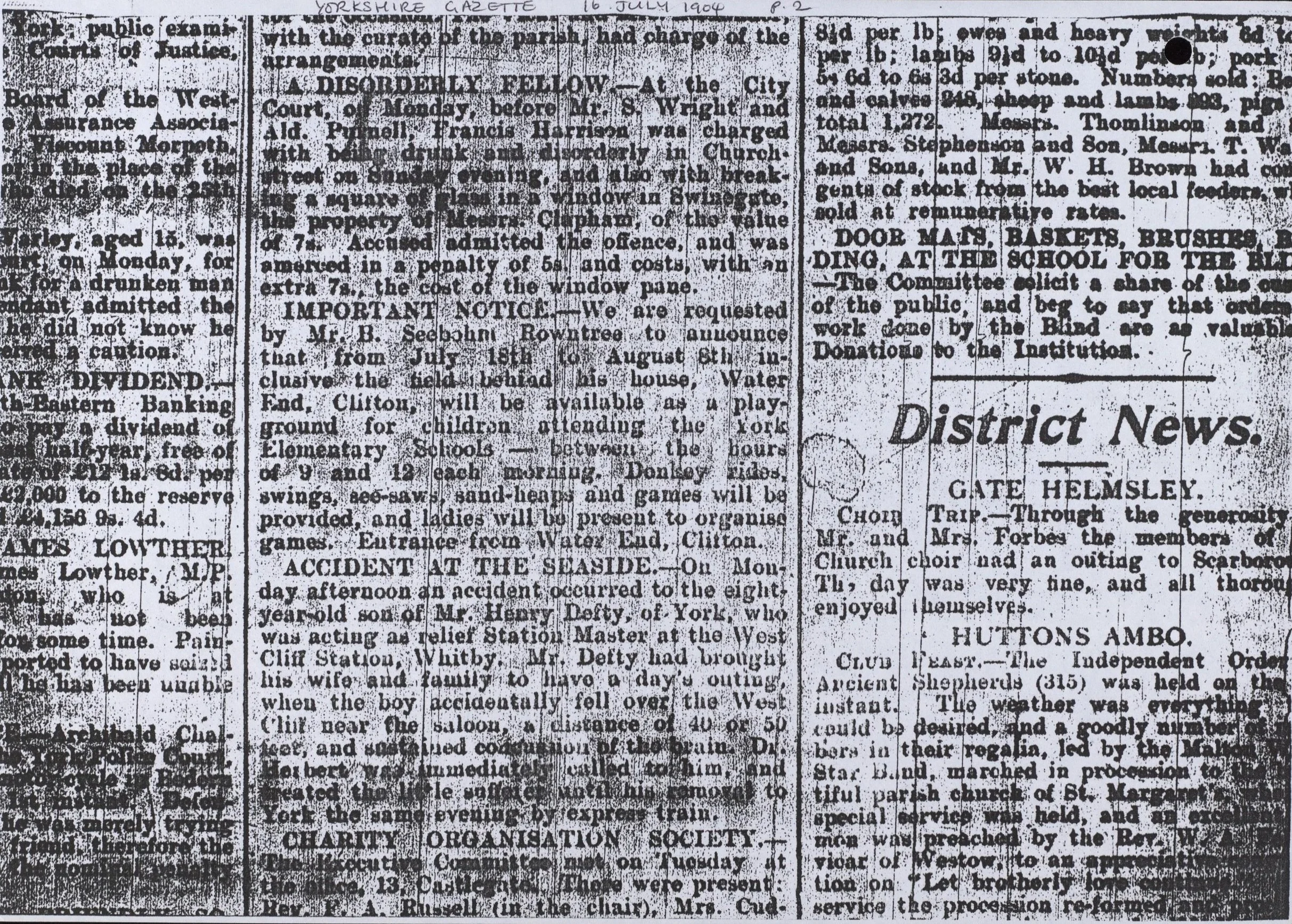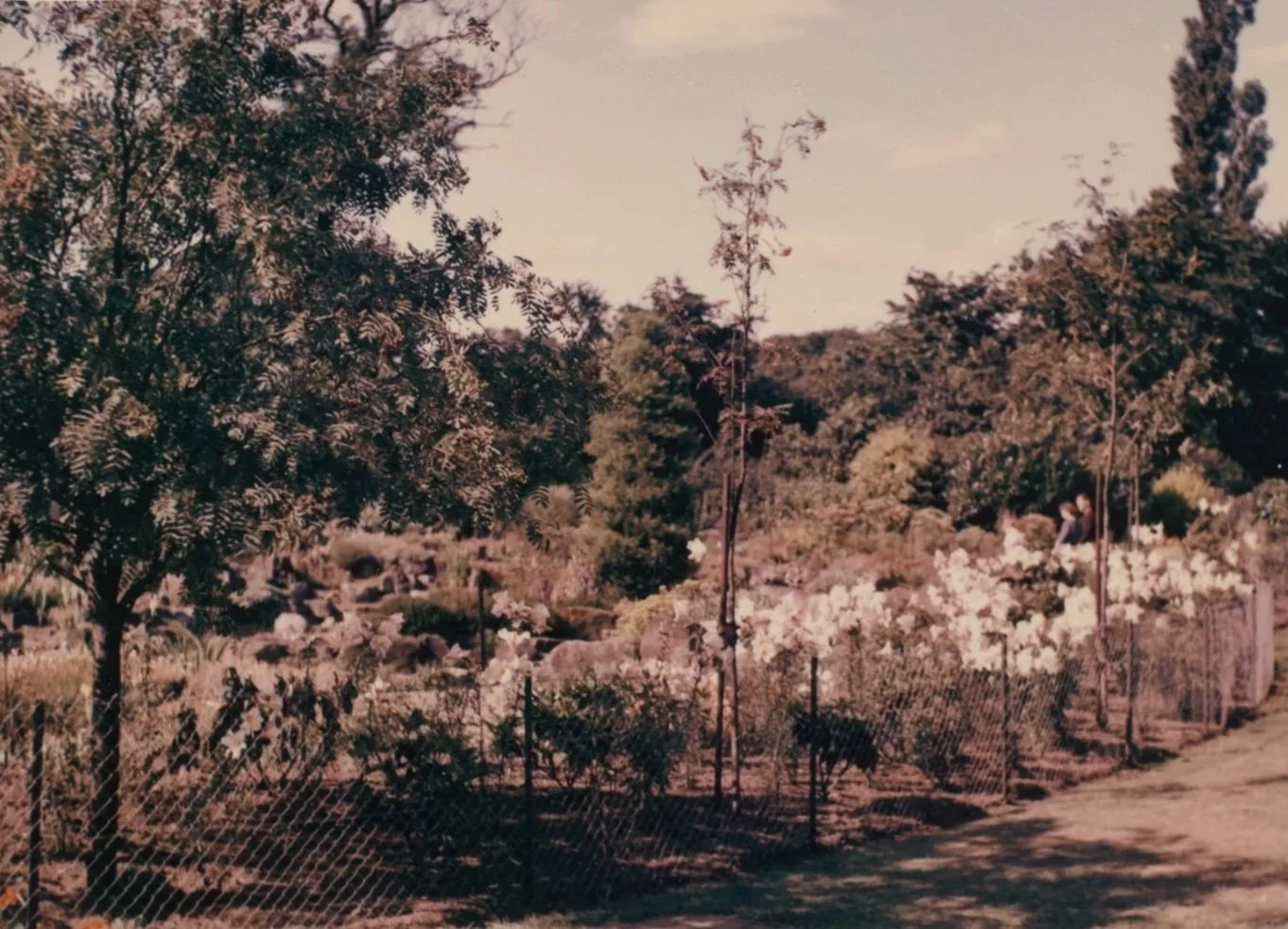
Rooted in history
Homestead Park was opened in 1904 by English social reformer Benjamin Seebohm Rowntree. Seebohm was the son of Joseph Rowntree who was the founder of the Rowntree Confectionary Company.
The Homestead was the home of Seebohm's from 1904 until 1936. As soon as the house was inhabited he announced in the Yorkshire Gazette that the fields behind the house would be made available to children attending York elementary schools for outdoor activities.
The house was greatly extended in the late 1970s and converted into offices. The offices are now head office of the Joseph Rowntree Foundation, which manages Homestead Park.
1904
The Homestead building was built by architect Fred Rowntree, Seebohm's cousin. Designed in the Arts and Crafts-style, the house comprised of 18 rooms in 6 acres.
The garden was initially opened as a playground for 3 weeks from 18 July. This marks the birth of Homestead Park.
The park's Pavilion building was also designed by Fred and constructed at the same time as a meeting place for local groups, and as a venue for evening classes.

1908
The Hungate Children’s Carnival took place on 27 July. A free event for children from one of the city’s poorest neighbourhoods. Activities included lawn games and donkey rides.
1921
A sister-park, Rowntree Park, opened on 16 July in Terry Avenue, South Bank in honour of Rowntree employees killed or injured in World War I.
Rowntree Park is now owned by City of York Council and managed in association with the Friends of Rowntree Park. It remains a beautiful and vibrant public green space and well worth a visit.

1936
Seebohm Rowntree sold The Homestead and Gardens to Joseph Rowntree Village Trust (JRVT) for £12,000, on condition that the gardens were maintained as a public park. He moved to North Dean, High Wycombe, Buckinghamshire. His son, Peter, was the Trust’s first tenant of Homestead House from 1936-1976.
The children’s playground was relocated from the main lawn to its current position.
1942
Homestead House and Gardens was damaged in a Baedeker Air Raid. The monkey house, aviary, greenhouses and rock garden were severely damaged. After the war, the monkey house was converted to grow vines.

1945-50
In 1945, the first Head Gardener, John Lewis, was appointed (before then, Seebohm’s own private gardener looked after the park). John remained in post until 1970.
A rocking-horse outdoor playground toy was purchased, which remains a much-loved feature of the under 7’s playground.
The first glasshouse was installed to grow plants for use in the park. It cost £400 a year to heat, by underground coke-fired boilers.

1951
Clifton Fruit Company, who had previously run a market garden on the site, disbanded. The growing area was incorporated in the park as the Upper Meadows. The total area of the park increased to 14 acres, from the original 6 acres, and it remains the park’s present-day footprint.

1963
Clifton Bridge opened, creating better access to the park from south of the River Ouse. Before this the only access across the river at Clifton was by ferry, and cost a penny.

1968
Joseph Rowntree Housing Trust (JRHT) formed as a legally separate housing association, which took on the management of Homestead Park.

1978
The Homestead, Seebohm’s former family home, became the headquarters for Rowntree Mackintosh Ltd. chocolate company.

1990
Homestead House became the head offices of Joseph Rowntree Foundation (JRF, formerly JRMT).

2004
Over 200 local children celebrate Homestead Park's Centenary with free ice-creams and donkey rides to mark 100 years since Seebohm opened the fields to the public.
2010
Seed mixes are sown from trials used by Sheffield University to grow the first annual wildflower meadow display in Homestead Park's Upper Meadow.

2024
Management of Homestead Park moves from the Joseph Rowntree Housing Trust (JRHT) to the Joseph Rowntree Foundation (JRF). As part of the regional work of the Emerging Futures Directorate, Homestead Park has a new mission: as a place to foster innovative approaches to tackle poverty, and facilitate the transition to a more equitable future for people and the planet.
2025
As part of JRF’s centennial year (marking 100 years since the death of Joseph Rowntree), Homestead Park hosts ‘Homestead Park Festival: Here is Hope’ on 5-6 July.
This 2-day free festival welcomed over 8,500 people to the park and featured:
live music
theatre
hands-on workshops
local food vendors
talks, panels and workshops from local and national organisations and thinkers working towards more hopeful, just and sustainable futures.

For more information about the history of Homestead Park and the Rowntree Family, visit the Borthwick Institute and Rowntree Society.
Do you have photos, stories or memories of the park you would like to share with us? We’d love to hear them. Please get in touch.













